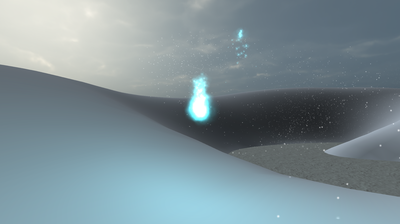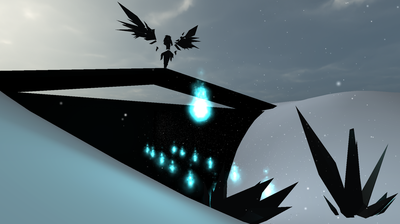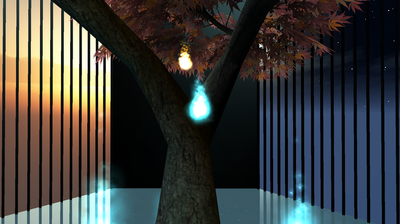Created by Chris Beagle.
One semester of development time spanning multiple assignments. Not a game project. Made in Unity.
The objectives of the assignments were to:
- Make an interesting 3D environment and lead the player through it effectively.
- Make a custom dynamic third-person camera and use some specific camera techniques.
- Explore non-narrative storytelling.
Although it isn't even a game, I'm quite happy with how this project turned out. Below is a video of a full runthrough.
Note: The music featured in snow is a custom mix and mash I did of three different versions of "Fear Not This Night"
by Jeremy Soule, from Guild Wars 2. I claim no rights to this audio.
One semester of development time spanning multiple assignments. Not a game project. Made in Unity.
The objectives of the assignments were to:
- Make an interesting 3D environment and lead the player through it effectively.
- Make a custom dynamic third-person camera and use some specific camera techniques.
- Explore non-narrative storytelling.
Although it isn't even a game, I'm quite happy with how this project turned out. Below is a video of a full runthrough.
Note: The music featured in snow is a custom mix and mash I did of three different versions of "Fear Not This Night"
by Jeremy Soule, from Guild Wars 2. I claim no rights to this audio.
Perhaps the most interesting thing about snow that isn't readily apparent is the fact that it doesn't use any dynamic reflections, nor does it use more than one skybox - everything is done using only a single camera and without true reflective surfaces. If it looks like an additional skybox, it's trickery. If it looks like a real-time reflection, it's an illusion.
Most of the apparent reflections are simply geometry that's been placed twice, once above a semi-transparent plane (the surface that is to appear reflective) and once below it, its height scale inverted. Likewise, particle systems above the plane emitting upward simply have twin systems below the plane emitting downward. The player's apparent reflection is a copy that just follows the player around underground the entire time, adjusting its distance from the plane to be equal to the player's, but inverted.
What appear to be additional skyboxes are actually planes using cubemap reflections - there is no actual depth. Reflections of these cubemap reflections are actually separate planes, just with appropriately-inverted cubemaps, viewed through the same semi-transparent surface that lent the other apparent reflections their deceptive qualities.
It's all smoke and mirrors - except even the mirrors are an illusion.
Most of the apparent reflections are simply geometry that's been placed twice, once above a semi-transparent plane (the surface that is to appear reflective) and once below it, its height scale inverted. Likewise, particle systems above the plane emitting upward simply have twin systems below the plane emitting downward. The player's apparent reflection is a copy that just follows the player around underground the entire time, adjusting its distance from the plane to be equal to the player's, but inverted.
What appear to be additional skyboxes are actually planes using cubemap reflections - there is no actual depth. Reflections of these cubemap reflections are actually separate planes, just with appropriately-inverted cubemaps, viewed through the same semi-transparent surface that lent the other apparent reflections their deceptive qualities.
It's all smoke and mirrors - except even the mirrors are an illusion.








